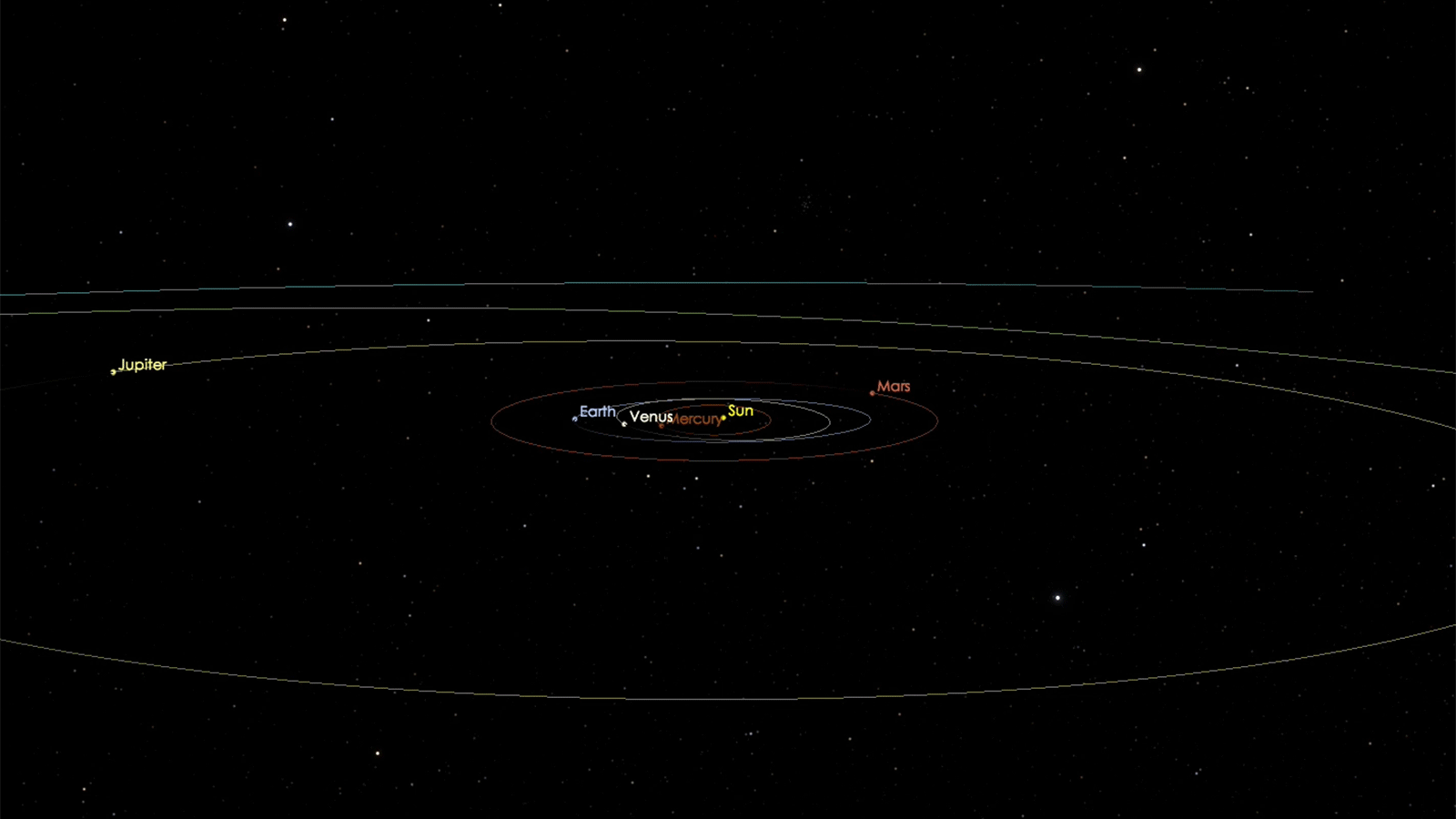Researchers Propose Mission to Intercept the Next Interstellar Asteroid

The solar system recently received its first interstellar visitor, 'Oumuamua, and researchers have now suggested a plan for a mission to meet the next guest from another star. This concept, formulated with SpaceX's Falcon Heavy rocket in mind, aims to send a spacecraft to rendezvous with an interstellar object and shoot it, so the probe can analyze the debris that gets kicked up.
The first known visitor from interstellar space, a cigar-shaped asteroid named 'Oumuamua, or A/2017 U1, was detected on Oct. 19 using the Panoramic Survey Telescope and Rapid Response System (Pan-STARRS) at Haleakala Observatory on the Hawaiian island of Maui. Scientists deduced the origins of the chaotically tumbling 1,300-foot-long (400 meters) object from its trajectory, which suggests it may have come from another star, or perhaps two.
Astronomers have determined that 'Oumuamua, whose name means "a messenger from afar arriving first" in Hawaiian, whipped around the sun on Sept. 9 and made its closest pass by Earth on Oct. 14. Researchers have already learned that 'Oumuamua is unlike anything seen in the solar system, varying in color across its surface in a way no astronomer could at first explain. ['Oumuamua: Solar System's First Interstellar Visitor Explained in Photos]
Mysteries still abound regarding 'Oumuamua, including how it got thrown away from its parent star: Its composition suggests it should have formed close to its star and stayed gravitationally bound. Scientists expect much to remain unknown about 'Oumuamua, since the asteroid was tracked zooming away from Earth at about 85,700 mph (137,900 km/h) relative to the sun, NASA officials said.
The authors of the new study assumed that other interstellar visitors like 'Oumuamua might zip through the solar system in the future, and first sought to see how capable we are of detecting such objects. They next calculated whether a mission from Earth could reach one and probe it before it flew back into interstellar space.
Previous work suggested that as stars form, they may hurl many objects like 'Oumuamua away from them into interstellar space — those objects would add up to about one-hundredth to one-thousandth the mass of Earth per star. The researchers suggested there may be about 10 quadrillion more 'Oumuamua-like interstellar objects than there are relatively young, metal-rich stars like the sun.
The scientists then calculated the number of interstellar objects that one could detect using the Large-Scale Synoptic Survey Telescope (LSST), a telescope under construction in Chile that will photograph the entire visible sky every few nights. They estimated the telescope could detect about 1.6 percent of all incoming interstellar objects within 10 astronomical units (AU) of the sun. (One AU is equal to the average distance between the sun and Earth.)
Get the Space.com Newsletter
Breaking space news, the latest updates on rocket launches, skywatching events and more!
The LSST is expected to become operational in 2022. "When LSST comes online, we will have the opportunity to observe something up close that formed around another star, without having to leave the solar system," study lead author Darryl Seligman, an astrophysicist at Yale University, told Space.com.
The researchers next investigated what kind of mission should rendezvous with an interstellar object. Since there are many questions regarding the makeup of these mysterious visitors, they suggested developing a probe that could fly near the object and fire a projectile at it to generate a plume of debris that the spacecraft could then analyze to deduce the object's composition. This same tactic was adopted by NASA's Deep Impact mission to the comet Tempel 1, and would require less rocket fuel than a mission that sought to match velocities with, or return a sample from, an interstellar object.
The scientists assumed that any interception missions would target interstellar objects that come very close to Earth, within 1 AU of the sun, "since these missions require a smaller amount of chemical propulsion," Seligman said. "This is somewhat intuitive — the closer an interstellar object gets to the Earth, the less space the rocket has to travel to intercept it."
The researchers planned their mission given the capabilities of SpaceX's Falcon Heavy rocket. They estimated that approximately once every 10 years, the LSST will see an interstellar object that an interception mission using the Falcon Heavy could reach.
"We propose to have a rocket ready to go, so that when LSST does see one, we can instantly send the mission," Seligman said.
Seligman and his colleague, Gregory Laughlin at Yale, detailed their findings online April 11 in an article accepted by The Astronomical Journal.
Follow Charles Q. Choi on Twitter @cqchoi. Follow us '@Spacedotcom, Facebook and Google+. Original article on Space.com.
Join our Space Forums to keep talking space on the latest missions, night sky and more! And if you have a news tip, correction or comment, let us know at: community@space.com.

Charles Q. Choi is a contributing writer for Space.com and Live Science. He covers all things human origins and astronomy as well as physics, animals and general science topics. Charles has a Master of Arts degree from the University of Missouri-Columbia, School of Journalism and a Bachelor of Arts degree from the University of South Florida. Charles has visited every continent on Earth, drinking rancid yak butter tea in Lhasa, snorkeling with sea lions in the Galapagos and even climbing an iceberg in Antarctica. Visit him at http://www.sciwriter.us
